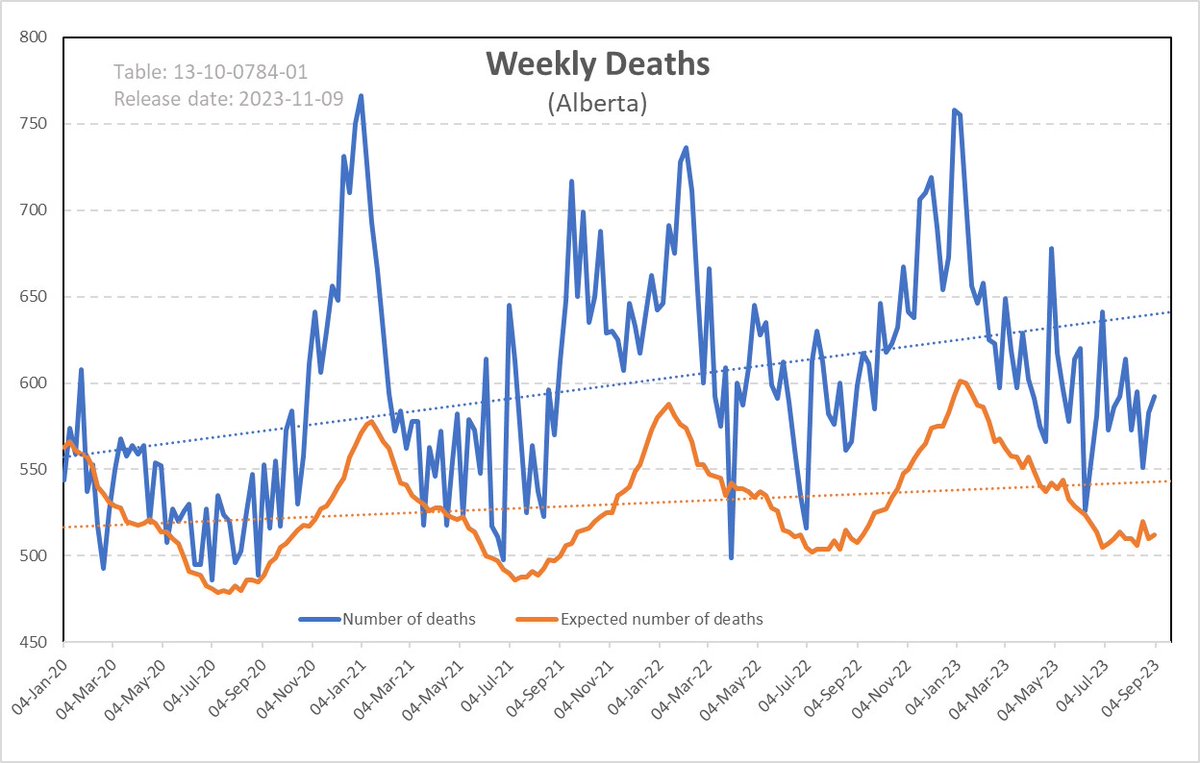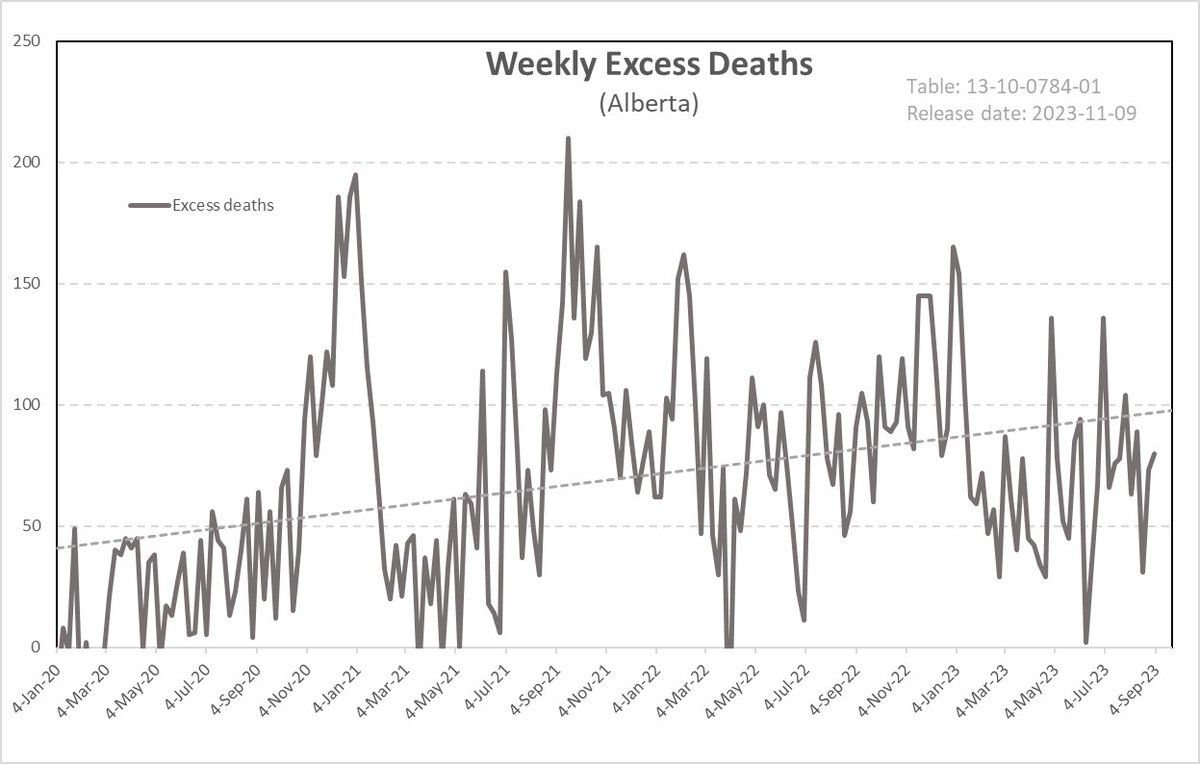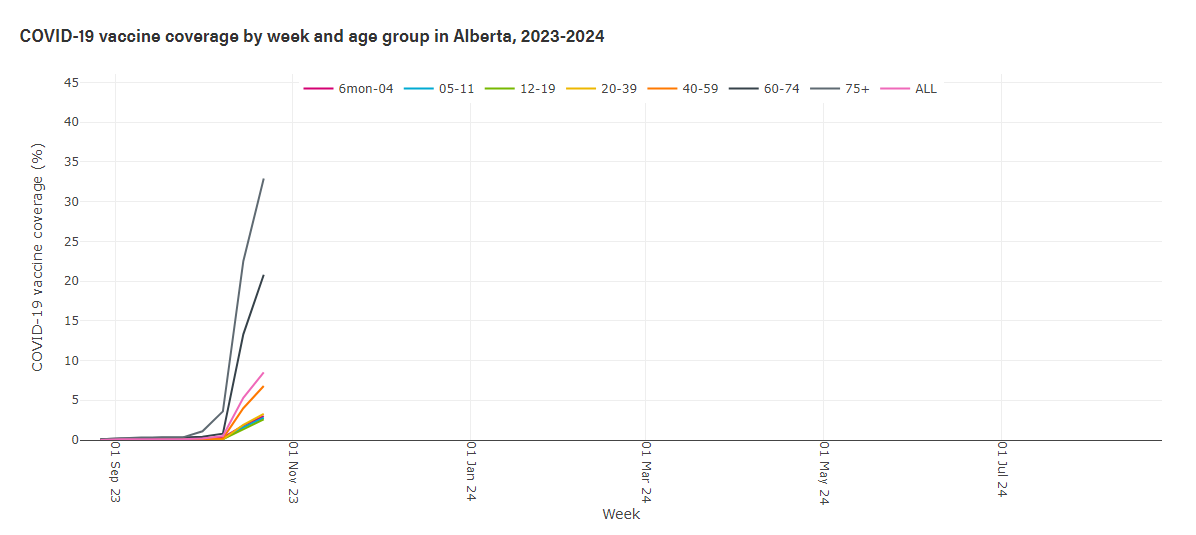Weekly deaths in Alberta are still trending higher than statistically expected. Here's data up to Sept 2, 2023. (updated Nov 9, 2023). The orange line is the number of weekly expected deaths. This fluctuates, and usually goes down in the summer months. The blue line is the actual number of weekly deaths. Between 60-85 Albertans more than normal are dying every week. That's a 10-12% increase since the COVID vaccine roll out.
1/

1/

Here's the same data, but I plotted "actual" minus "expected", which is excess deaths. The trend has been going up for 2 years. That's after we rolled out the vaccine. What's causing an extra 80 people to die every week in Alberta? Draw your own conclusions.
P.S. It's not COVID, long-COVID or heat pumps.
2/

P.S. It's not COVID, long-COVID or heat pumps.
2/

COVID vaccine uptake this campaign is much lower than previous campaigns. Less than 35% of those over the age of 70 have received a COVID booster. It falls off dramatically for younger Albertans. It's less than 10% for everyone under the age of 40.
alberta.ca/stats/dashboar…

alberta.ca/stats/dashboar…

COVID remains relatively harmless for otherwise healthy people under the age of 60.
Reminder: The best way to protect yourself from COVID, or any other diseases, is to eat well, avoid processed foods, exercise regularly, don't smoke, only drink alcohol in moderation and sleep more than 7 hours per night.

Reminder: The best way to protect yourself from COVID, or any other diseases, is to eat well, avoid processed foods, exercise regularly, don't smoke, only drink alcohol in moderation and sleep more than 7 hours per night.

Don't let anyone guilt you into taking the vaccine. Our healthcare system is not overwhelmed with unvaccinated Albertans, our healthcare system is overwhelmed by Albertans who make back lifestyle decisions. 

• • •
Missing some Tweet in this thread? You can try to
force a refresh



















